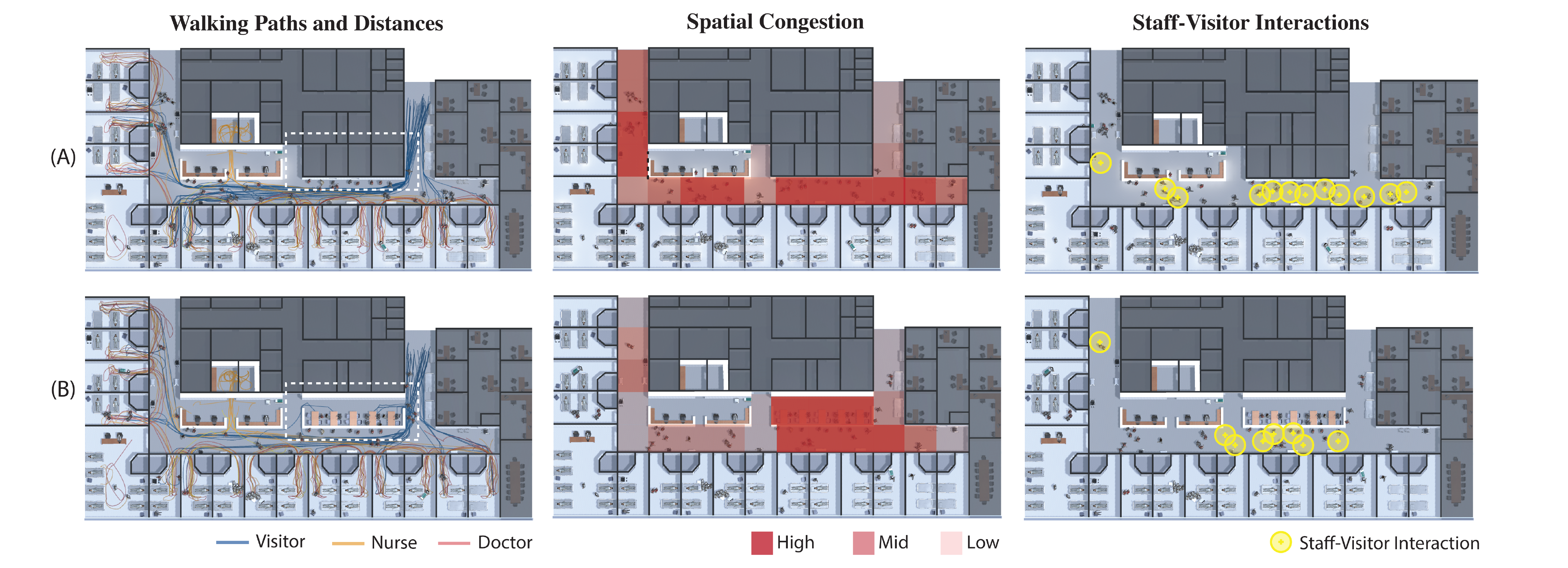Human-Aware Architectural Design
One of the most important challenges in architectural design is predicting the impact of a design solution on the behavior of the prospective inhabitants. Current approaches mostly focus on simulating the performance of built environments without considering human behavior, leading to major uncertainties in the design process. At IPL, we develop computational models to simulate human behavior in the design phase, to inform the decision-making process of architects, engineers, and planners toward human-aware architectural design.

Human behavior simulation allows comparative evaluation of alternative architectural design solutions while considering trade-offs among Key Performance Indicators (KPI)of people's experience, health, and well-being, but also operational efficiency, and space utilization. The outcomes of human behavior simulation analyses can consist of numerical outputs as well as spatio-temporal data-maps visualizing the outcomes of space utilization processes on top of a floor plans to facilitate decision-making.

Media
Publications
- Schaumann D., Putievsky Pilosof N., Gath-Morad M., Kalay Y.. 2020. "Simulating the impact of facility design on operations: A study in an internal medicine ward”. Facilities. Vol. 38 No. 7/8, pp. 501-522
- Putievsky Pilosof N., Schaumann D., Sopher H., Yahav J., Kalay Y..2020. "Outpatient Clinic Design in Israel: Comparative Evaluation by Digital Simulation”. Integrating the Organization of Health Services, Worker Wellbeing and Quality of Care pp 377-383, Springer
- Gath-Morad M., Zinger M. , Schaumann D., Putievsky Pilosof N., Kalay Y.E. 2018. “A Dashboard Model to Support Spatio-Temporal Analysis of Simulated Human Behavior in Future Built Environments”. Symposium on Simulation for Architecture and Urban Design (SimAUD). Delft, Netherlands.
- Hong S. W., Schaumann D., Kalay Y. E. 2016. “Human Behavior Simulation in Architectural Design Project: an Observational Study in an Academic Course” Computers, Environment and Urban Systems, 60.
- Sopher H., Schaumann D., Kalay Y.. 2016. “Simulating Human Behavior in (un)Built Environments: Using an Actor Profiling Method”. International conference on spatial cognition (ICSC). Miami, USA
- Hong S. W., Kalay Y. E., Schaumann D.. 2015. “The Effects of Human Behavior Simulation on Architectural Design Education”. 20th Annual Conference on Computer-Aided Architectural Design Research in Asia (CAADRIA 2015).
